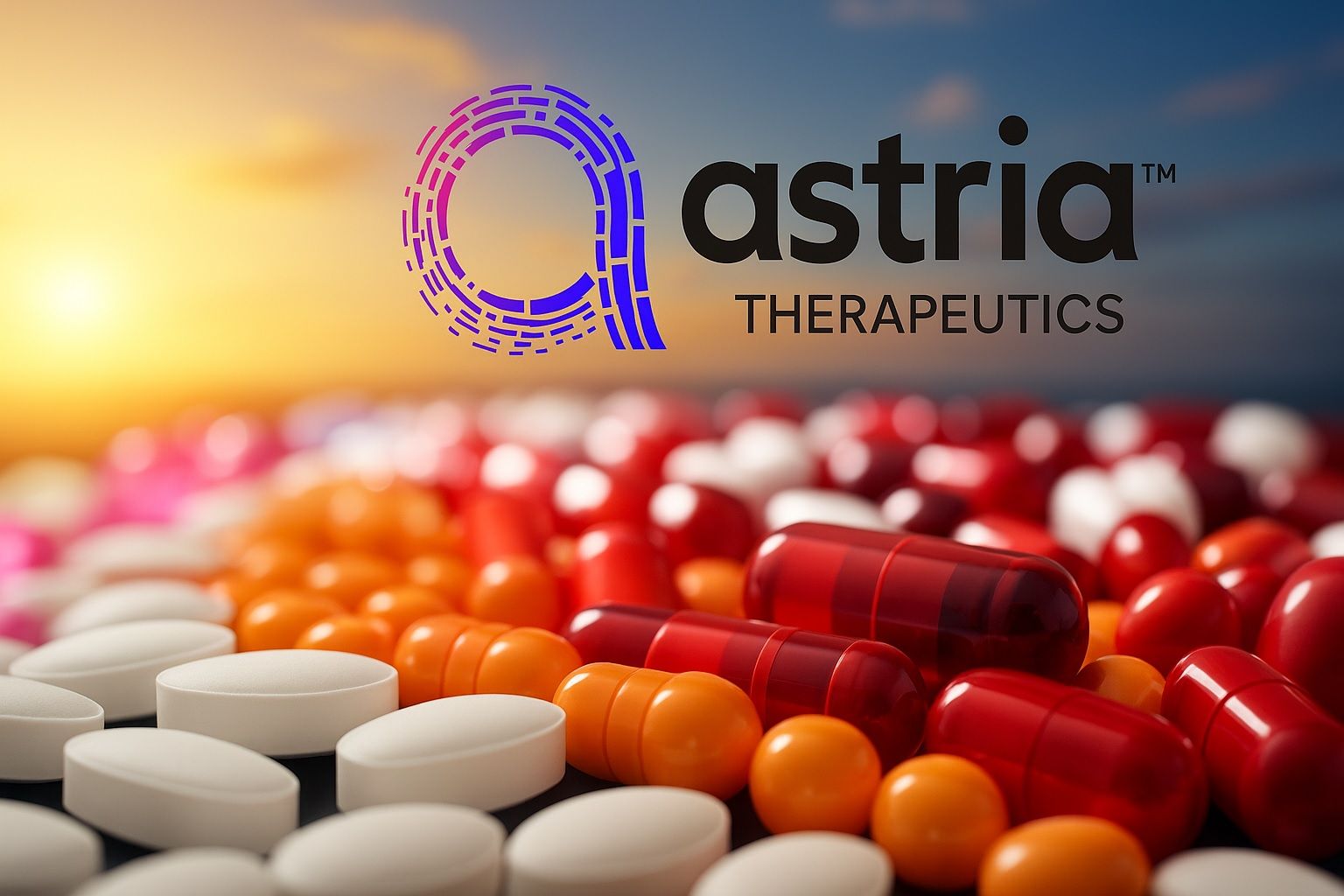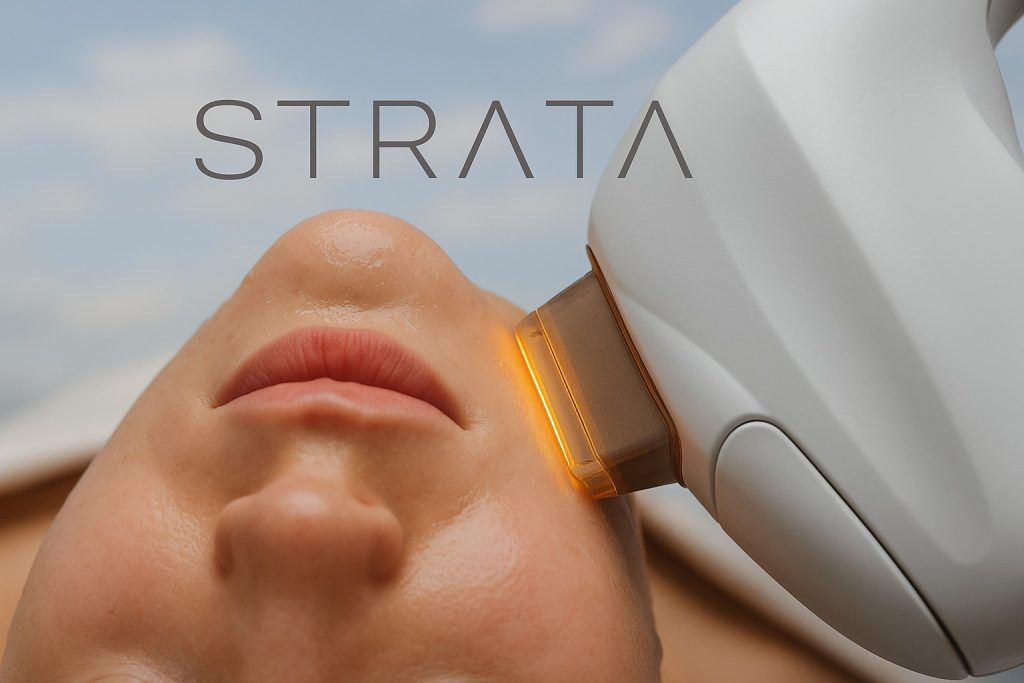- Market Move: Astria Therapeutics (NASDAQ: ATXS) shares jumped roughly 40–50% on Oct. 14, 2025, closing around $11.90 (from $8.47 the prior day) [1]. In pre-market trading the same day, ATXS briefly traded near $12.22, up 44.3% [2] [3].
- Acquisition News: BioCryst Pharmaceuticals agreed to acquire Astria in a cash-and-stock deal valuing ATXS at about $13 per share (≈$700M enterprise value), a ~54% premium [4]. The deal is expected to close in Q1 2026, and Astria’s CEO Jill Milne will join BioCryst’s board [5] [6].
- Shareholder Action: Investor-rights firm Halper Sadeh LLC announced on Oct. 14 it is investigating whether the sale to BioCryst is fair to Astria shareholders [7]. This stirred further volatility and attention.
- Pipeline: Astria’s lead drug navenibart (STAR-0215) – a long-acting monoclonal antibody targeting plasma kallikrein for hereditary angioedema (HAE) prophylaxis – is in late-stage development (Phase 3 ALPHA-ORBIT/ORBIT-EXPANSE) [8] [9]. Its second program, STAR-0310, is an anti-OX40 antibody for moderate-to-severe atopic dermatitis, currently in Phase 1a [10].
- Clinical Results: A prior Phase 1b/2 trial of navenibart showed “robust and durable efficacy” – about a 90–95% reduction in monthly HAE attack rate [11]. Enrollment in the pivotal Phase 3 ALPHA-ORBIT trial is underway (global sites) with topline data expected in early 2027 [12] [13]. On Oct. 8, 2025, Astria announced initiation of a Phase 3 long-term ORBIT-EXPANSE extension trial [14]. STAR-0310’s Phase 1a began Jan 2025, with initial data due Q3 2025 [15].
- Finances: Astria is pre-revenue (no approved products) and has been funded by equity and deals. Q2 2025 cash was $259.2M (down from $328.1M at end-2024) [16]. The company says cash plus a recent licensing payment (see below) will fund operations into 2028 [17]. Net losses have been large: about $33–34M per quarter in early 2025 [18] [19].
- Licensing Deal: In Aug 2025 Astria licensed Japanese rights for navenibart to Kaken Pharmaceutical, securing $16M upfront and up to $16M in milestones, plus royalties [20]. This $32M deal (plus partial Phase 3 cost reimbursements) extends the cash runway [21] [22].
- Analysts & Sentiment: Wall Street is overwhelmingly bullish on ATXS (pre-deal). The consensus rating was Buy/Strong Buy, with an average 12-month price target near $29–33 (roughly 200–300% upside vs pre-deal price) [23]. Key analysts include Cantor Fitzgerald (Buy, PT ~$47–49) and HC Wainwright (Strong Buy, PT ~$20) [24] [25]. Zacks ranked ATXS as a “#2 (Buy)” stock in Oct. 2025 [26] [27]. Institutional ownership is high (≈99% of shares) [28].
- Competitors: The HAE market is dominated by Takeda (lanadelumab/Takhzyro), CSL Behring (C1-inhibitors like Haegarda), Pharming (Ruconest) and BioCryst (Orladeyo) [29]. The global HAE market was about $5.6B in 2024 and is projected to reach ~$19.7B by 2032 [30]. Astria’s navenibart (q3 or q6 month dosing) would compete by offering more convenient dosing than current injectables. In atopic dermatitis, established players (Sanofi/Regeneron’s dupilumab, Pfizer’s JAK inhibitors, etc.) hold large market share; the AD drugs market was ~$19B in 2025 [31]. STAR-0310 (OX40-targeting mAb) is an early-stage program in a crowded field of biologics [32] [33].
Latest News & Developments
On Oct. 14, 2025, Astria was swept into the headlines by a surprise $700+ million takeover. BioCryst Pharmaceuticals announced a definitive merger agreement to acquire Astria for $8.55 in cash plus 0.59 shares of BioCryst stock per Astria share (≈$13.00 total) [34] [35]. This values Astria at roughly $920M equity and $700M enterprise [36]. The Boards of both companies approved the deal, which is expected to close in Q1 2026 (subject to approvals) [37]. Astria CEO Jill Milne will join BioCryst’s board post-merger [38].
Market reaction: News of the deal caused Astria’s stock to jump sharply. Reuters reported ATXS shares rose over 40% in pre-market trading on Oct. 14 [39], and ChartMill noted a 44.27% pre-market gain to $12.22 [40]. (By comparison, BioCryst shares fell ~7.5% [41].) On Oct. 13 close ATXS was $8.47 [42]; as of Oct. 14 morning it was about $11.90 [43]. Trading in ATXS was briefly halted on Oct. 14 due to pending news [44].
Legal review: On the same day, Halper Sadeh LLC, a shareholder rights law firm, announced it is investigating whether the merger consideration is fair to Astria shareholders [45]. Their press release notes concerns that Astria’s board may have undervalued the company. (These “stock alert” filings are common when a premium M&A deal is announced.) While not blocking the deal, such investigations sometimes lead to negotiations for higher price or disclosures.
Pipeline update: Aside from the takeover, Astria also announced on Oct. 8, 2025 that it had initiated the ORBIT-EXPANSE Phase 3 long-term study of navenibart [46]. This follow-on trial will enroll participants completing the main ALPHA-ORBIT trial, giving them continued dosing and monitoring. Astria’s Chief Medical Officer Dr. Chris Morabito called this “exciting progress” and noted strong patient/physician interest [47]. Earlier in 2025, the company’s corporate updates highlighted the Kaken licensing deal (Aug 2025) and steady enrollment in ALPHA-ORBIT [48]. No other major news (e.g. new data release) emerged in early Oct beyond these items.
Stock Performance & Recent Price Moves
Astria’s stock had been trading well below its current peak for most of 2025. The 52-week range was roughly $3.56–$12.52 [49], with a steep rally only in the past days. In mid-October 2025, ATXS showed extremely high volatility: for example, on Oct. 13 it closed at $8.47, and by the morning of Oct. 14 it was ~$11.90 [50]. A summary of recent price points:
| Date | Closing Price | Note |
|---|---|---|
| Oct 10, 2025 | ~$8.31 (est.) | Recent trading level before news [51] |
| Oct 13, 2025 | $8.47 | Day before merger announced [52] |
| Oct 14, 2025 | ~$11.90 (pre) | Jump on takeover news [53] [54] |
Investors’ excitement was driven by the high premium and implied valuation. Market data shows volume spiked significantly on Oct. 14 (though specific figures are proprietary). For context, Astria’s market cap (pre-deal) was under $350M; post-announcement the implied equity value approached $920M [55]. Analysts’ price targets before the deal (typically $20–30+) now seem conservative relative to the takeover price, but they reflected expectations for pipeline success.
Clinical Pipeline & Therapeutic Focus
Astria is a biotech focused on allergic/immunologic diseases, with two main programs:
- Navenibart (STAR-0215) – Indication: Hereditary angioedema (HAE) prophylaxis. This is a human monoclonal antibody that inhibits plasma kallikrein. It is designed as a long-acting injectable (subcutaneously every 3 or 6 months). The company touts it as “potential best-in-class,” aiming to reduce the attack rate far more with less frequent dosing than competitors [56] [57]. Navenibart completed a Phase 1b/2 study (ALPHA-STAR) in 2024: results showed a 90–95% mean reduction in attack frequency and good safety [58]. The global pivotal Phase 3 (ALPHA-ORBIT) is ongoing; topline results are expected in early 2027 [59]. After finishing the 6-month core trial, patients roll into a new long-term ORBIT-EXPANSE study (announced Oct. 2025) [60].
- STAR-0310 – Indication: Moderate-to-severe atopic dermatitis (eczema). This is an OX40-receptor antagonist antibody. OX40 is a validated immune target in AD, and Astria’s version is engineered for high potency and extended half-life (dosing every ~2–3 months) [61] [62]. A Phase 1a trial in healthy volunteers began in January 2025, primarily testing safety and PK [63]. Astria expects early proof-of-concept results (from this Phase 1a) in late Q3 2025 [64]. STAR-0310 is still far behind approved AD treatments, but Astria believes its broad T-cell targeting (OX40 affects Th1/Th2/Th17 cells) could offer advantages [65]. Any AD program will face stiff competition from established drugs (e.g. dupilumab, JAK inhibitors) [66], but investors note that AD is a huge $20B+ market.
<table> <thead><tr><th>Program</th><th>Indication</th><th>Phase</th><th>Next Steps</th></tr></thead> <tbody> <tr><td><strong>Navenibart (STAR-0215)</strong></td><td>Hereditary Angioedema (HAE) prophylaxis</td><td>Phase 3 (pivotal)</td><td>Ongoing ALPHA-ORBIT trial (top-line ~early 2027):contentReference[oaicite:66]{index=66}; ORBIT-EXPANSE extension started Oct 2025:contentReference[oaicite:67]{index=67}.</td></tr> <tr><td><strong>STAR-0310</strong></td><td>Atopic Dermatitis (AD)</td><td>Phase 1a</td><td>Phase 1a healthy volunteer study initiated Jan 2025; initial results expected Q3 2025:contentReference[oaicite:68]{index=68}. No efficacy data yet.</td></tr> </tbody> </table>
The company also notes that navenibart is “differentiated” by its dosing and mechanism [67]. Astria’s CEO Jill Milne emphasized the focus on navenibart: “Delivering on navenibart’s best-in-class potential is our top priority,” noting strong patient enthusiasm and the recent Japan partnership (with Kaken) as strategic boosts [68].
Financial Performance & Funding
Astria has no product revenues; its cash burn covers R&D and trials. In 2025, operating expenses rose as trials progressed. Quarterly financials (2025) were roughly:
| Metric | Q1 2025 | Q2 2025 |
|---|---|---|
| Cash on hand ($M) | $295.1 [69] | $259.2 [70] |
| Net loss ($M) | $33.7 [71] | $33.1 [72] |
| Operating loss ($M) | $37.0 [73] | $35.8 [74] |
| R&D expense ($M) | $27.8 [75] | $25.9 [76] |
Astria’s cash dropped by ~$39M in Q2 alone [77], reflecting heavy trial spending. The company had stated it can fund the ALPHA-ORBIT Phase 3 and STAR-0310 Phase 1a through to completion with its existing cash (now aided by the Kaken deal) [78] [79]. In Q2 the company highlighted that its cash plus the $16M upfront from Kaken (and reimbursement of some trial costs) would carry operations into 2028 [80].
Funding: Astria has raised capital through public offerings and licensing. The most recent license (Kaken) brings up to $32M for Japanese rights to navenibart [81]. Astria has not disclosed other debt; its plan relies on trial-readout-driven value and/or partnerships. If the BioCryst deal closes, Astria shareholders will receive BioCryst stock (0.59 share per ATXS) plus cash, diversifying exposure but making future funding a BioCryst decision.
Analysts & Market Sentiment
Before the takeover news, analysts were widely optimistic on Astria’s prospects. Consensus rating: Buy/Strong Buy, based on 6–9 analysts [82]. The average 12-month price target was around $29–30 [83] (implying 250–300% upside from ~$8–9 pre-deal). For example, Cantor Fitzgerald maintained a Buy rating with a $49 target [84], and HC Wainwright’s Joseph Pantginis called it a Strong Buy (raising target from $16 to $20 in Sept 2025) [85]. Zacks Investment Research also rated ATXS a #2 (Buy) stock as of Oct 2025 [86].
On the acquisition call, BioCryst’s CEO Charlie Gayer projected combined HAE revenues of “at least $1.8 billion by 2033” for Orladeyo + navenibart [87]. RBC Capital’s Brian Abrahams opined that adding navenibart (a late-stage, “de-risked” HAE asset) is “a smarter move than backing riskier early-stage programs” [88]. These comments reflect belief that Astria’s lead program could become a key HAE therapy.
However, the Halper Sadeh announcement shows there is some skepticism about valuation. By calling for “increased consideration” or disclosures [89], activists signal that $13/share might be viewed as too low by aggressive shareholders. (If successful, such efforts could slightly raise the deal price or add protections.) Overall, market sentiment in mid-October is bullish on ATXS given the deal premium; many traders view the surge as partly closing the gap toward $13. After the surge, the stock is trading near the deal price, so the immediate upside may depend on legal outcomes or competing bids.
Competitors & Industry Context
Astria operates in specialty rare-disease markets with strong competitors:
- HAE treatment market: Dominated by Takeda (lanadelumab/Takhzyro), CSL Behring (plasma-derived inhibitors like Haegarda), BioCryst (berotralstat/Orladeyo), and Pharming (recombinant C1-inhibitor Ruconest) [90]. These established players hold much of the $5–6 billion 2024 HAE market [91]. Small biotechs like KalVista (oral kallikrein inhibitor KVD900) and Ionis (antisense drug donidalorsen with CSL) are emerging. Astria’s niche: Navenibart aims to offer longer dosing intervals (every 3–6 months) versus the current every-2-weeks (lanadelumab) or monthly (Haegarda) injections. 2024–2032 forecasts show HAE therapy market growing at ~17% CAGR to almost $20B [92], driven by new drugs and greater diagnosis rates.
- Atopic dermatitis (AD) market: A huge, highly competitive field (~$19B in 2025 [93]). Key drugs include Regeneron/Sanofi’s Dupixent (dupilumab), JAK inhibitors (AbbVie’s Rinvoq, Lilly’s Cibinqo, etc.), and other newer biologics (Pfizer’s abrocitinib, LEO’s tralokinumab, etc.) [94]. Any AD therapy must compete against these blockbusters. STAR-0310’s mechanism (OX40 antagonism) is distinct, but it is very early in development. Investors recognize AD as a large market, but one where incumbents hold the leading positions.
In both areas, Astria’s potential depends on executing trials and regulatory approval. If navenibart succeeds, BioCryst expects to gain a strong second product. If STAR-0310 shows proof-of-concept, it could become a valuable asset in AD (though likely requiring partnering or big marketing support). Industry trends favor successful HAE prophylactic innovations (BioCryst is betting on it); for AD, the trend toward newer targeted therapies bodes well for differentiated candidates.
Investment Outlook & Risks
From an investor’s perspective, ATXS had been a speculative biotech bet – high risk/high reward. The BioCryst deal dramatically changes the scenario: Astria shareholders are essentially cashing out at a 54% premium. If the merger closes, ATXS will cease as a separate ticker, and holders will own BioCryst stock (and cash). Upside beyond the $13 offer now depends on deal dynamics (e.g. whether shareholder actions force a higher bid) and BioCryst’s stock performance. BioCryst guided that the pro forma HAE revenue could exceed $1.8B by 2033 [95], which suggests long-term confidence, but integration risks remain.
Risks: If the deal fails (e.g. due to activist pressure or approvals), Astria would revert to independent biotech status. In that case, its fate hinges on clinical outcomes – notably the pivotal navenibart results (early 2027) and early AD data. Biotech trial failures are common, so there is significant development risk. Financially, Astria has no current revenue stream, so continued funding (equity or partnerships) would be needed absent the Kaken deal. Competition is also a risk: even a successful navenibart will face established therapies and any future biosimilars. Finally, small-cap biotech stocks can be highly volatile, and ATXS is no exception (historically more volatile than the market [96]).
Potential: On the positive side, Astria’s lead asset targets an orphan indication (HAE) where drug prices are high and patient need is strong. Astria’s trials to date have been encouraging, and analysts have envisioned ATXS as a multi-bagger if navenibart dominates its field. The acquisition bid itself underscores the perceived value: BioCryst was willing to spend substantial funds to acquire a single asset’s rights, implying confidence in its potential. For long-term investors (now mostly converting into BioCryst holders), the focus will shift to BioCryst’s execution of the combined HAE franchise. If navenibart and Orladeyo capture their projected sales, that $1.8B+ target by 2033 [97] could be met. Conversely, failure to differentiate or adverse data would limit upside severely.
In summary, Astria’s story in Oct 2025 is dominated by a takeover. For current stakeholders, the key question is whether the merger process yields a better deal or smoother integration. Looking further out, the combined BioCryst/Astria portfolio’s ability to disrupt the HAE market – plus any surprises from Astria’s early AD program – will determine the ultimate returns. Investors should weigh the 53% premium secured, the robust existing cash runway [98], and the binary nature of biotech trials (success vs. failure) when considering ATXS (or BioCryst, post-merger) as an investment.
Sources: Recent press releases, SEC filings and news articles were used for this report. Notable references include Reuters and Business Wire reports on the BioCryst acquisition [99] [100], Astria’s official financial releases [101] [102], and analyst commentary from RBC and others [103] [104]. Market data was drawn from financial news sites such as Investing.com [105]. All quotes and data are cited above.
References
1. www.investing.com, 2. www.chartmill.com, 3. www.investing.com, 4. www.reuters.com, 5. www.reuters.com, 6. www.stocktitan.net, 7. www.marketscreener.com, 8. astriatx.com, 9. www.nasdaq.com, 10. astriatx.com, 11. www.nasdaq.com, 12. astriatx.com, 13. www.nasdaq.com, 14. www.nasdaq.com, 15. astriatx.com, 16. www.nasdaq.com, 17. www.nasdaq.com, 18. www.nasdaq.com, 19. www.nasdaq.com, 20. www.nasdaq.com, 21. www.nasdaq.com, 22. www.nasdaq.com, 23. stockanalysis.com, 24. stockanalysis.com, 25. stockanalysis.com, 26. www.nasdaq.com, 27. www.nasdaq.com, 28. www.marketbeat.com, 29. www.fortunebusinessinsights.com, 30. www.fortunebusinessinsights.com, 31. www.grandviewresearch.com, 32. www.grandviewresearch.com, 33. astriatx.com, 34. www.marketscreener.com, 35. www.reuters.com, 36. www.stocktitan.net, 37. www.stocktitan.net, 38. www.stocktitan.net, 39. www.reuters.com, 40. www.chartmill.com, 41. www.reuters.com, 42. www.investing.com, 43. www.investing.com, 44. www.marketbeat.com, 45. www.marketscreener.com, 46. www.nasdaq.com, 47. www.nasdaq.com, 48. www.nasdaq.com, 49. www.investing.com, 50. www.investing.com, 51. www.marketbeat.com, 52. www.investing.com, 53. www.chartmill.com, 54. www.investing.com, 55. www.stocktitan.net, 56. astriatx.com, 57. www.nasdaq.com, 58. www.nasdaq.com, 59. astriatx.com, 60. www.nasdaq.com, 61. astriatx.com, 62. www.grandviewresearch.com, 63. astriatx.com, 64. astriatx.com, 65. astriatx.com, 66. www.grandviewresearch.com, 67. astriatx.com, 68. www.nasdaq.com, 69. www.nasdaq.com, 70. www.nasdaq.com, 71. www.nasdaq.com, 72. www.nasdaq.com, 73. www.nasdaq.com, 74. www.nasdaq.com, 75. www.nasdaq.com, 76. www.nasdaq.com, 77. www.nasdaq.com, 78. www.nasdaq.com, 79. www.nasdaq.com, 80. www.nasdaq.com, 81. www.nasdaq.com, 82. stockanalysis.com, 83. stockanalysis.com, 84. stockanalysis.com, 85. stockanalysis.com, 86. www.nasdaq.com, 87. www.reuters.com, 88. www.reuters.com, 89. www.marketscreener.com, 90. www.fortunebusinessinsights.com, 91. www.fortunebusinessinsights.com, 92. www.fortunebusinessinsights.com, 93. www.grandviewresearch.com, 94. www.grandviewresearch.com, 95. www.reuters.com, 96. www.marketbeat.com, 97. www.reuters.com, 98. www.nasdaq.com, 99. www.reuters.com, 100. www.stocktitan.net, 101. www.nasdaq.com, 102. www.nasdaq.com, 103. www.reuters.com, 104. stockanalysis.com, 105. www.investing.com







